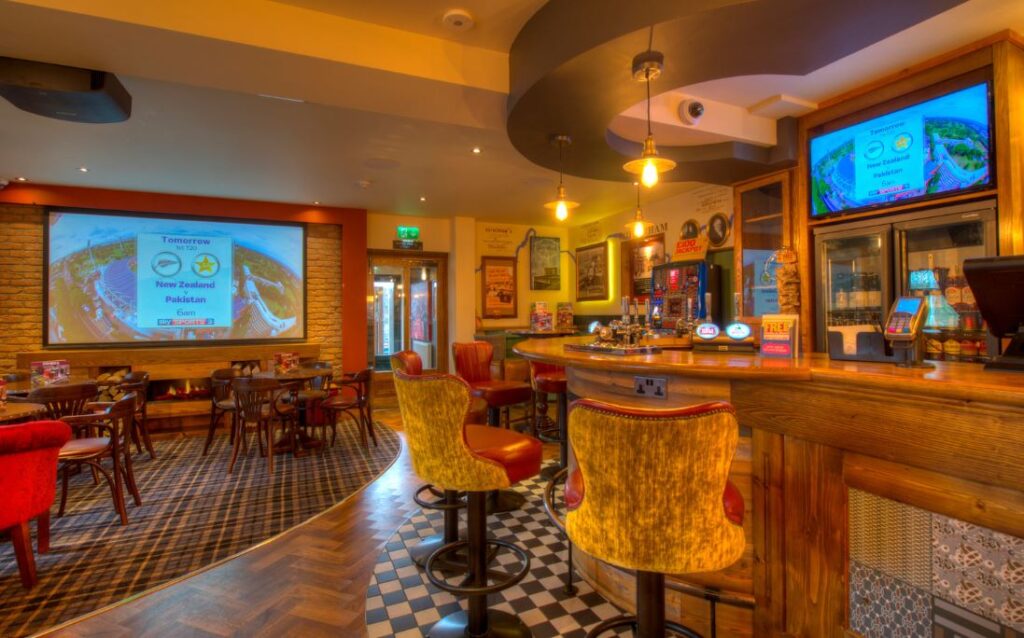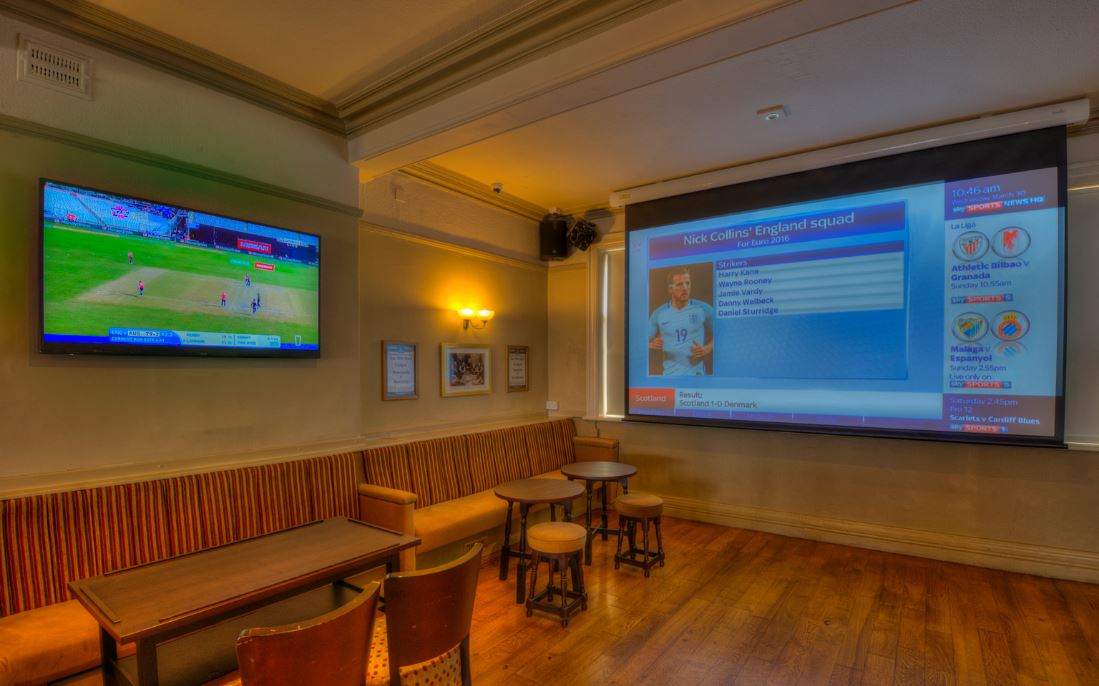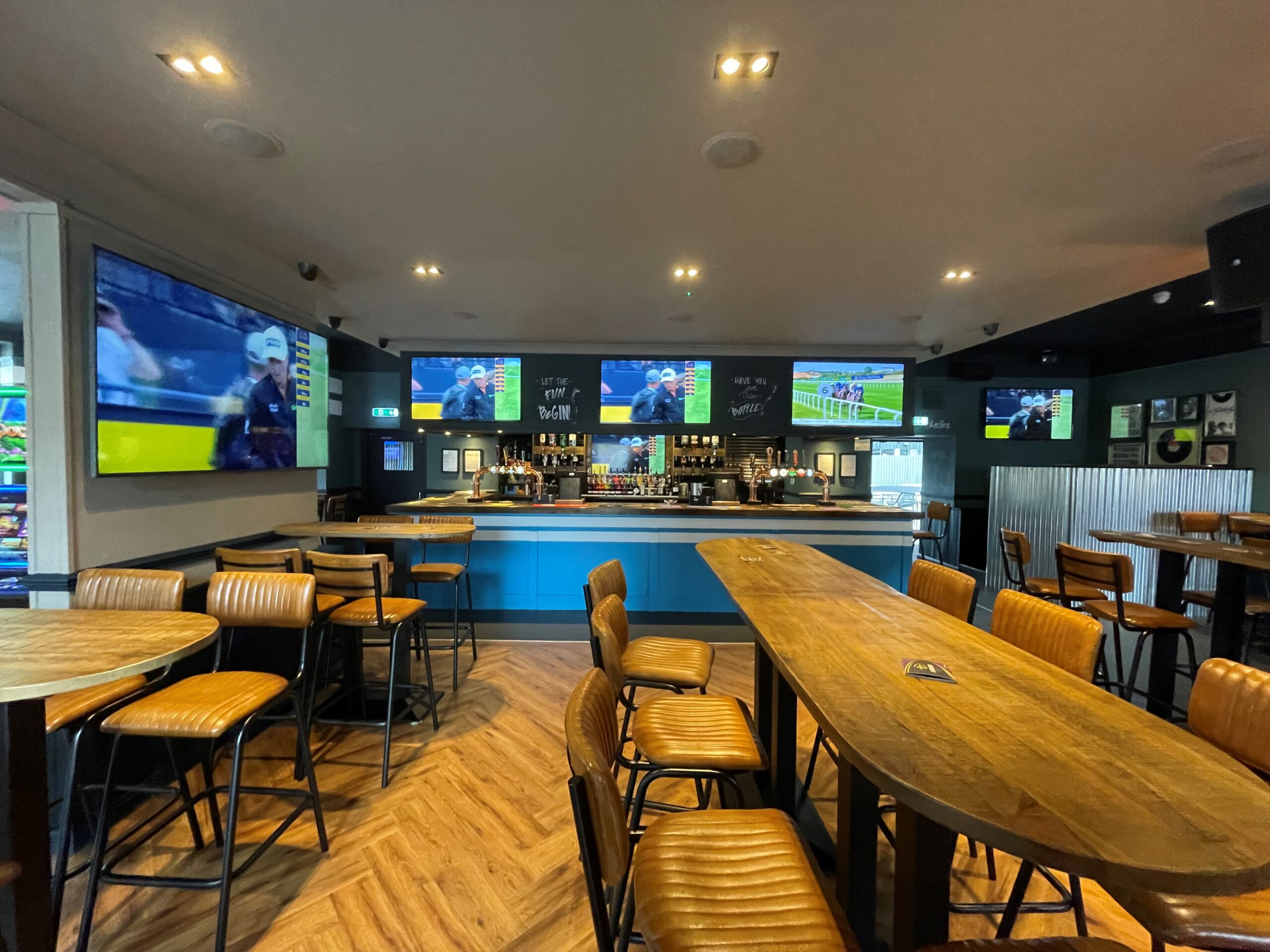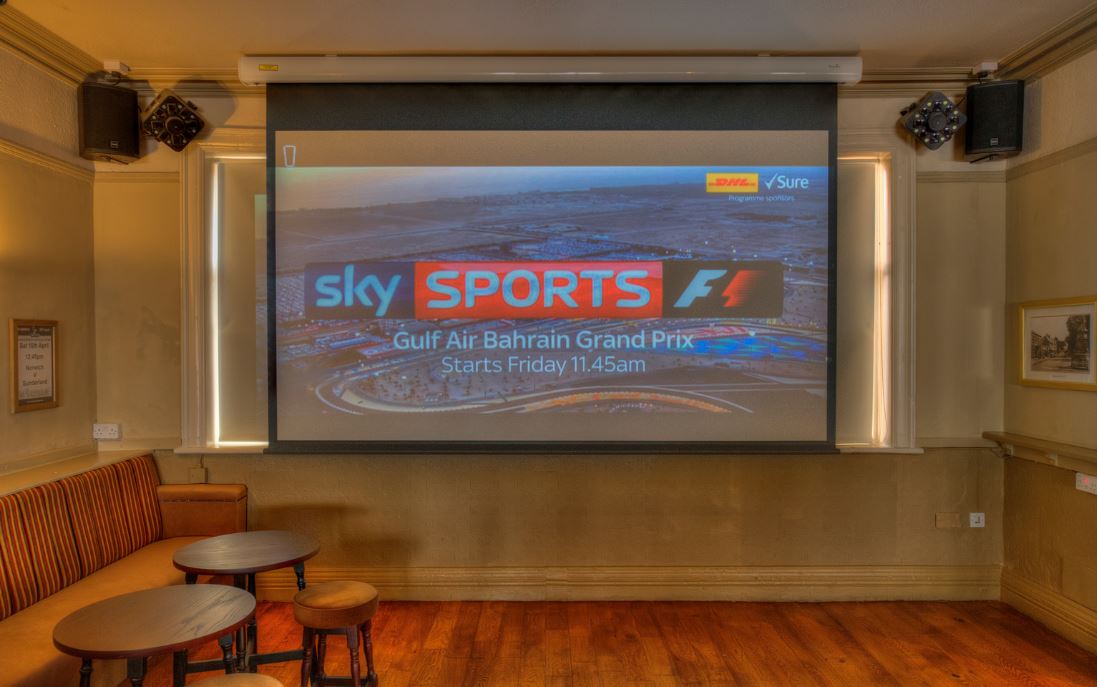
The World Cup is by far the biggest sporting event of the year, especially for die hard football fans. Making sure your business is World Cup ready is the difference between your premises being full to the brim on match days or losing the customers to the establishment down the road! But is it better to watch the football on a large-screen TV or is a projector the better way to go? Which is best for your business: TV or projector?
TV vs projector: screen size
TV screens come in an array of sizes to suit your needs; from 24 & 32 inch in-booth TVs to the popular big screen 55 & 65 inch TVs. Where a range topping 80+-inch 4K TV screen will give you ultra-detailed picture quality on a large scale, if you are looking for an even bigger image, a projector could be a better solution for you.
Unlike TV screens, a projector gives you much more flexibility with the image size it emits. You can create a huge screen of 100 inches or more using a projector simply by adjusting the lens.

TV vs projector: room setup
Your run-of-the-mill TV setup will be a lot simpler than that of most projectors. Because a TV won’t change size, you don’t need to worry about adjusting the footprint in your premises to accommodate for a bigger image. A TV setup is simple: find your space, choose your TV screen, and install it.
The setup for a projector will be more complicated because of flexibility of use and placement. For a basic setup, you’ll need the space for the largest projected image you’re likely to need. You’ll then need to be able to mount the projector somewhere suitable to project the image.

TV vs projector: image quality
Whether you opt for a TV or a projector, the image quality will largely come down to what you buy. The main difference is that the image quality of your TV will not be affected anywhere near as much by how it’s set up. Most smart TVs now will offer super defined 4K picture quality.
Meanwhile, the image quality you get from a projector is very subjective. Although resolution is a key aspect of how clear the image is, another factor to consider is image size. Since image size is adjustable with a projector, your setup will alter how sharp your picture is. That’s just one of several things your setup will impact. Having your projector cast a huge image will not only reduce the clarity of the image, but it will also lower the brightness. That’s why most projectors function better in darker rooms, so if your venue is bright and airy, a projector might not be the way to go.
What you’re projecting onto plays a considerable role too. The clearest image will come from an image projected onto a projector screen. If you don’t use a projector screen, any texture or lack of uniformity on your projection surface will affect the final image. We can supply and install all projector screen types: a cinema screen, a pull-down projector screen, an electric projector screen or even a screen for an outdoor projector.

TV vs projector: the conclusion
There’s lots to think about when considering a TV or projector for your business. Installing a combination of TV screens alongside a projector and projector screen would offer the ultimate viewing experience for your customers. Displaying all the highly anticipated World Cup matches on a huge scale using a projector would set you apart from your competitors and encourage community spirit. However, if you don’t have the space or would prefer more outlets to watch the live sport, why not include several large 4K TVs in your venue instead, so customers can enjoy sporting action in smaller groups.
For more information on all types of display screens here https://tvc.uk.com/display-screens/
For more information about projectors and installation here https://tvc.uk.com/projector-installation/
If you’re still unsure which option is best for you and your business, get in touch with TVC today and we can specify the ideal solution for you.